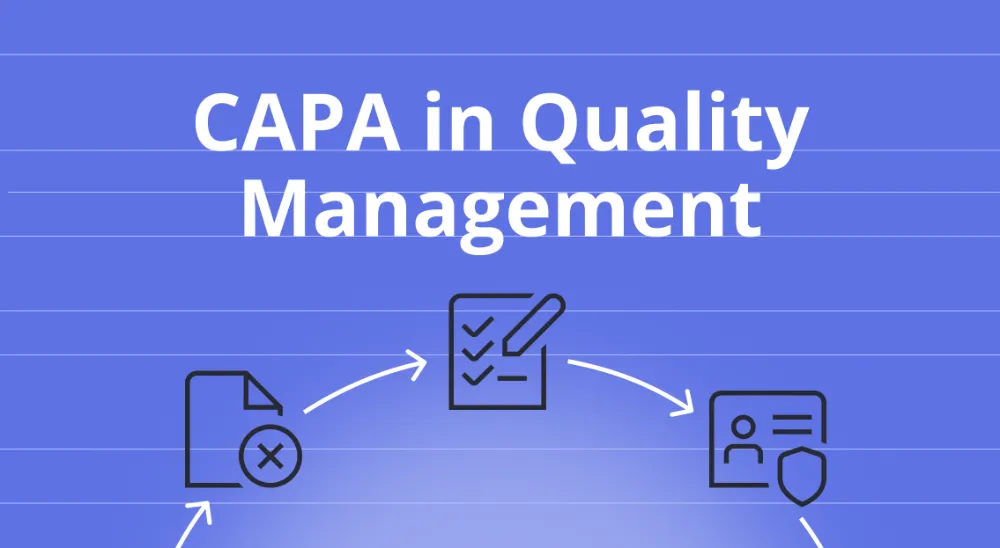Introduction
In maintenance management, efficiency and accuracy are everything. Whether you’re running a manufacturing plant, managing a fleet of vehicles, or maintaining critical infrastructure, keeping detailed records is essential. That’s where maintenance log templates come in handy. They help organizations track equipment performance, schedule preventive maintenance, and stay compliant with industry standards.
This guide covers why maintenance logs matter, the different types of templates available, and how to use them effectively. If you manage vehicles, keeping an auto maintenance log is especially important — it helps track repairs, maintain service schedules, enhance safety, and even boost resale value.
What Are Maintenance Logs?
A maintenance log is a detailed record of all maintenance activities performed on equipment, machinery, or facilities. Moving from paper-based logs to digital systems is a game-changer, making maintenance tracking more accurate and efficient.
Typically, a maintenance log includes:
- Date of maintenance
- Tasks performed
- Personnel involved
- Any issues identified
Keeping accurate logs helps organizations:
- Track Equipment Performance: Spot patterns that indicate when repairs or replacements are needed.
- Schedule Preventive Maintenance: Reduce downtime by catching potential problems early.
- Ensure Compliance: Meet industry regulations and safety standards.
- Improve Accountability: Assign responsibility for tasks and track their completion.
By using maintenance logs effectively, businesses can run smoother operations, avoid costly repairs, and extend the lifespan of their equipment.
Types of Maintenance Log Templates
Maintenance logs come in different formats, depending on what needs to be tracked. Whether it’s daily checkups, preventive care, or unexpected repairs, having the right template makes maintenance easier and more organized. Here are some of the most common types:
- Daily Maintenance Logs: These logs keep track of routine inspections and small repairs done every day. They’re great for catching minor issues early and making sure everything is running smoothly.
- Preventive Maintenance Logs: Think of these as a planner for maintenance. They help schedule regular checkups to prevent breakdowns, keeping equipment in good shape and reducing unexpected downtime.
- Corrective Maintenance Logs: When something breaks, corrective maintenance logs document what went wrong and how it was fixed. They’re useful for spotting recurring issues and finding long-term solutions.
- Equipment Maintenance Logs: These logs focus on specific pieces of equipment, tracking their repair history, part replacements, and performance over time. They’re essential for managing expensive machinery and ensuring everything runs efficiently.
- Facility Maintenance Logs: Facility logs cover building and infrastructure maintenance—things like plumbing, electrical systems, and general upkeep. They help ensure facilities stay safe, functional, and compliant with regulations.
- Machine Maintenance Log Templates: Designed for tracking the maintenance of various machines, these templates provide a clear record of inspections, repairs, and overall performance. They’re useful for staying on top of routine maintenance and avoiding costly breakdowns.
- Vehicle Maintenance Log Templates: These logs help track everything from oil changes to major repairs for cars, trucks, and other vehicles. Keeping a detailed log ensures vehicles stay in top condition, improving reliability, safety, and even resale value.
Free Useful Maintenance Log Templates
If you’re looking for efficient ways to manage and track your maintenance tasks, these free templates and tools can help you get started:
- Equipment Maintenance Log Template
Purpose: Keep detailed records of repairs and performance for specific equipment, offering a history of work done and helping track recurring issues. - Vehicle Maintenance Log Template
Purpose: Perfect for tracking fleet vehicle maintenance such as oil changes, tire rotations, and brake inspections. This log helps keep your vehicles in optimal condition with a solid maintenance schedule. - Maintenance Templates from Fiix
Purpose: Fiix offers a range of customizable maintenance templates, including options for both digital and physical record keeping, with advanced tracking and reporting features. - Maintenance Log App by Jotform
Purpose: A digital tool to manage maintenance logs, schedule tasks, and track equipment performance in real-time, making maintenance tracking simpler and more efficient.
Benefits of Using Maintenance Log Templates
Keeping track of maintenance can be a challenge, but using log templates makes the process easier and more efficient. Here’s how they help:
- Saves Time & Increases Efficiency: A standardized template keeps everything organized, so you don’t have to waste time hunting down scattered notes. With all maintenance records in one place—dates, tasks, parts used, and personnel involved—it’s much easier to track history and plan ahead.
- Improves Accountability: When tasks are clearly documented, it’s easy to see who’s responsible for what. A well-structured log ensures that maintenance gets done on time and helps teams stay on top of inspections and repairs. Adding routine checkups to the schedule also prevents small issues from turning into bigger, more expensive problems.
- Helps with Smarter Decision-Making: Detailed logs provide valuable insights that help optimize maintenance schedules, allocate resources efficiently, and prioritize repairs before they escalate. With accurate data, organizations can make informed decisions instead of relying on guesswork.
- Ensures Regulatory Compliance: Many industries require proper maintenance records to meet safety and regulatory standards. Using a structured template ensures all necessary documentation is in place, making compliance easy and reducing the risk of penalties.
- Reduces Costs & Prevents Breakdowns: Catching problems early saves money in the long run. Well-kept logs help spot recurring issues, allowing teams to fix them before they lead to costly repairs or downtime. Preventive maintenance also extends the lifespan of equipment, reducing the need for expensive replacements.
How to Choose the Right Maintenance Log Template
Selecting the right maintenance log template depends on your organization’s specific needs. Here are some factors to consider:
- Type of Equipment or Facility: Different types of equipment and facilities require different maintenance approaches. Choose a template that aligns with the specific needs of your assets.
- Frequency of Maintenance: Consider how often maintenance tasks are performed. Daily maintenance logs are suitable for routine checks, while preventive maintenance logs are better for scheduled tasks.
- Regulatory Requirements: Ensure that the template you choose meets any regulatory requirements applicable to your industry. This may include specific fields or documentation standards.
- Ease of Use: The template should be easy to use and understand. A well-designed template reduces the likelihood of errors and ensures that all necessary information is recorded.
- Integration with Other Systems: If your organization uses maintenance management software, choose a template that can be easily integrated with your existing systems. This ensures seamless data flow and reduces duplication of effort.
- Standardize Processes: Documenting maintenance procedures systematically is crucial to ensure consistency and compliance. Comprehensive records in an equipment maintenance log help track routine inspections, repairs, and servicing schedules, optimizing operational efficiency and equipment lifespan.
Implementing Maintenance Log Templates
Once you’ve chosen the right maintenance log templates, it’s time to put them into action. Here are some simple steps to make sure everything runs smoothly:
1. Train Your Team
It’s essential that everyone knows how to properly use the templates. Take some time to show your team how to fill them out, why accurate record-keeping matters, and how to make the most of the logs. This ensures that everyone is on the same page and keeps things running smoothly.
2. Standardize the Process
Set up clear, simple guidelines for how everyone should record and review maintenance tasks. By standardizing the process across all teams, it becomes much easier to spot patterns, analyze data, and make sure everyone is using the logs the same way, no matter where or who they’re from.
3. Embrace Digital Tools
Consider switching to digital maintenance logs if you haven’t already. Digital tools are easy to update and share with others, and they can be integrated with other systems, making your workflow more efficient and accurate. Plus, digital logs give you real-time data, which can help with quick decision-making and keeping things running smoothly.
4. Review Logs Regularly
Make it a habit to regularly go over your maintenance logs. This will help you identify any recurring issues or trends that need attention. Regular reviews will keep your maintenance strategy on track and ensure that the logs stay relevant and effective over time.
5. Encourage Feedback
Don’t forget to ask your team for feedback! Encourage them to share thoughts on how the templates and processes are working for them. This feedback can help you refine the system and ensure that it’s actually meeting everyone’s needs.
By following these simple steps, you’ll not only ensure that your maintenance logs are being used correctly, but you’ll also create a process that keeps your operations running smoothly and efficiently.
Case Studies: Real-World Uses of Maintenance Log Templates
Here’s how different industries have put maintenance log templates to good use, improving their operations and saving time and money:
Manufacturing Industry
A manufacturing company started using daily maintenance logs to keep track of its production machinery. By regularly checking the logs, they noticed patterns of wear and tear before they became serious issues. This allowed them to schedule maintenance ahead of time, which reduced unexpected breakdowns and boosted production efficiency by 20%.
Healthcare Sector
In a hospital, equipment maintenance logs became a game changer for tracking the performance of medical devices. These logs helped the hospital catch faulty equipment early, schedule repairs quickly, and make sure they stayed compliant with safety standards. The team also used the data to negotiate better deals with suppliers, improving both service and cost efficiency.
Transportation and Logistics
A logistics company started using corrective maintenance logs to track repairs on its fleet of vehicles. By documenting recurring issues, they were able to fix the root causes of breakdowns. As a result, they cut maintenance costs by 15%, improved driver safety, and reduced vehicle downtime. The vehicle maintenance logs were also key in improving overall operational efficiency.
Facility Management
A property management company found great value in using facility maintenance logs to stay on top of building upkeep. These logs helped the team schedule regular inspections, address maintenance requests quickly, and make sure they were following safety regulations. This led to happier tenants and a noticeable decrease in overall operational costs.
These examples show that no matter the industry, maintenance log templates can make a huge difference in keeping things running smoothly, preventing problems before they arise, and saving valuable time and money.
Future Trends in Maintenance Log Management
As technology continues to change the way we work, maintenance log management is also evolving. Here are some exciting trends to watch for in the near future:
Integration with IoT
The Internet of Things (IoT) is making a huge impact on maintenance management. With IoT sensors, equipment can now automatically send real-time data about its performance directly into your maintenance logs. This means fewer manual entries and more accurate information, which helps you stay on top of things without the extra effort.
Predictive Maintenance
Predictive maintenance is all about catching problems before they happen. By using data and machine learning, it can predict when equipment is likely to fail so you can fix it before it becomes a big issue. Maintenance logs play a vital role here, providing the historical data needed to train these predictive models and help keep things running smoothly.
Mobile Solutions
Managing maintenance logs on the go is becoming easier with mobile apps and cloud-based platforms. These solutions allow you to update logs in real time, access them remotely, and collaborate with your team no matter where you are. It’s a simple way to stay efficient and organized, no matter how busy things get.
Blockchain for Data Security
Blockchain isn’t just for cryptocurrency—it’s also being used to make maintenance logs more secure. By creating tamper-proof records, blockchain ensures that your data stays accurate and trustworthy. This is especially helpful for organizations that need to keep their maintenance logs compliant and transparent.
AI-Powered Analytics
Artificial Intelligence (AI) is starting to play a big role in analyzing maintenance logs. AI can spot patterns or trends that might be missed by the human eye, giving you insights into potential issues before they become major problems. It helps businesses optimize their maintenance strategies and improve efficiency.
These trends show that the future of maintenance log management will be all about making things smarter, faster, and more reliable. With these technologies, managing maintenance tasks will be easier and more efficient than ever before.
Conclusion
Maintenance log templates are vital tools for any organization looking to improve how it manages maintenance tasks. These templates provide a clear and organized way to track and record maintenance activities, helping businesses boost efficiency, stay compliant, and save money. Moving from manual logs to digital ones is a major leap forward, improving both accuracy and ease of use. Whether you’re managing a small office or a large industrial facility, choosing the right maintenance log templates can make a big difference in keeping everything running smoothly.
So, if you haven’t already, it’s time to start exploring the right maintenance log templates for your organization. It’s the first step towards making your maintenance process more efficient, effective, and future-ready.
-
 CAPA: Corrective and Preventive Action in Quality Management
CAPA: Corrective and Preventive Action in Quality ManagementThere are many problem-solving methods in the world of quality management, but one has become…
Technology • October 27, 2025
-
 How Effective Digital Work Instructions Change Manufacturing
How Effective Digital Work Instructions Change ManufacturingModern manufacturing is undergoing radical changes associated with the transition from traditional paper-based processes to…
Technology • October 27, 2025
-
 Manufacturing Success with SOPs and Standard Work Instructions
Manufacturing Success with SOPs and Standard Work InstructionsEvery day, workers perform hundreds of operations in factories and plants. The safety of people,…
Technology • October 27, 2025
